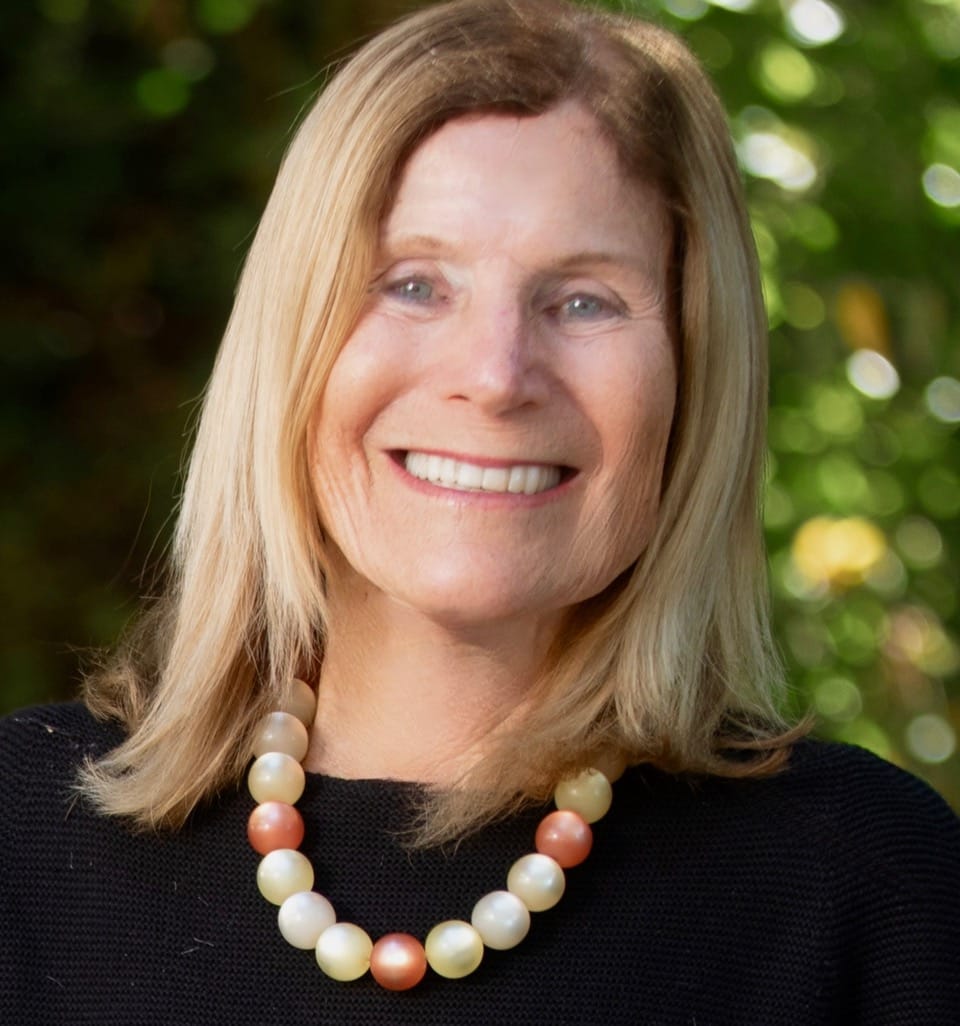Denby Fawcett: How A Young Man With Wanderlust Traveled The World For 50 Years Capturing Humanity In Photographs
Steve McCurry, who visited Punahou School last week, made the famous National Geographic cover of the "Afghan Girl" and many other memorable images.
April 9, 2024 · 9 min read

About the Author
Denby Fawcett is a longtime Hawaii television and newspaper journalist, who grew up in Honolulu. Her book, Secrets of Diamond Head: A History and Trail Guide is available on Amazon. Opinions are the author’s own and do not necessarily reflect Civil Beat’s views.
Steve McCurry, who visited Punahou School last week, made the famous National Geographic cover of the “Afghan Girl” and many other memorable images.
I met Steve McCurry at a gathering at Punahou School last week.
No sooner had I introduced myself when we got into a funny and heated conversation over whether he was a photographer or an artist.
I thought he should call himself a photographer. He said he was an artist. I said, no he was a famous photographer. And so it went, back and forth, laughing, until we were asked to sit down to a fancy bento box lunch of roasted vegetables and sauteed kajiki.
McCurry was at Punahou April 1-3 as part of the school’s Creative Greats, a program to introduce students to legendary figures in the arts. For more than five decades, he has traveled the world as a photographer/artist capturing scenes of humanity and beauty to connect viewers to people and events they might never experience themselves.
He is famous, very famous, for his photograph “Afghan Girl,” the 12-year-old refugee with penetrating green eyes whose face in June 1985 became one of the most widely viewed National Geographic magazine covers ever.
McCurry photographed the girl in 1984 — without recording her name — coming across her in a makeshift girls’ school in a tent in a refugee village near Peshawar, where he stopped to take photos of the students and noticed her stunning face.
She had escaped with her siblings and her grandmother after walking for two months over high mountains to get to the Pakistan refugee camp after Russians bombed her village during the Soviet-Afghan war.

McCurry is renowned today not just for his image of the Afghan Girl but for hundreds of other pictures taken in places stretching across the world — depicting people in wars, natural disasters, celebrating important cultural festivals or just living their daily lives.
His photos evoke surprise and wonder mainly through the direct gaze of many of his subjects who make a viewer feel at one with them.
During a presentation on April 2 in the Punahou chapel for students, faculty and alumni, McCurry was asked by Punahou alumna Marcia Kemble how he approached his subjects to get them to relate to him so he could take such close personal photos. It was a question many other people asked during his visit.
McCurry said he learned to gain acceptance over time by trial and error. In 1983, he said he was photographing a family in Old Delhi, India when a man started screaming at him to give him the film. A crowd gathered. “I knew they would kill me if I didn’t give him the film. I did not want to ever have that happen again. I always try to understand, is this the right thing to do? Is it respectful? I always try to treat people with dignity and respect.”
He said he tries to make conversation with a person he hopes to photograph and when there is no common language between them, he said he even uses gestures or a tip of the head. A smile can go a long way.

A student asked about the danger of his work.
He said he came close to getting killed in Mumbai, India in 1993 while taking pictures of people in a festival carrying large statues of the Indian god Ganesha into the water. He was in the water himself to get the pictures at twilight when a group of men attacked him, pushing him under.
“They were pounding on me, holding me down,” he said. “I lost every piece of camera equipment, but the film was OK in canisters.”
He also nearly perished in a two-seater airplane taking aerial photos of a lake in Slovenia. The pilot flew too low. One of the planeʻs wheels hit a wave in the lake and it crashed, flipping upside down in the water. McCurry was trapped underwater until he figured out how to wiggle out of an elaborate safety harness and heavy helmet holding him down. “It was the worst experience in my life,” he said.
He was asked how much of his work is technique versus art and how he knew when he had a great photo.
“As time goes on, you learn how to translate what goes onto paper. In the early days when I got back to the darkroom with photos I thought were great, I saw I had not paid attention to the background in a picture and how it should fit together with the foreground. You learn to pay attention to the quality of light. You learn to hone your eye,” he said.

At an earlier event at Punahou, McCurry talked about the Afghan Girl, Sharbat Gula, a singular photo considered by many to be a work of art.
He said he came across her when was covering the war, traveling back and forth across the Afghanistan-Pakistan border in 1984 and stopped to visit one of the many refugee camps in Pakistan.
In the camp, he said could hear the voices of children in a tent that turned out to be a girls’ school taught by a woman who had been injured in the war.
The teacher gave him permission to photograph the students in hopes that it might draw the attention of the outside world to the plight of the refugees.
When he saw the girl with the green eyes sitting in a corner, he found her face astonishing. “I knew I had to get a picture of this girl,” he said.
She was shy, he said, but when she saw him photographing the other girls, she became more comfortable. “It was almost like she felt excluded if I didn’t take her picture,” he said. He took photos of Gula both with her shawl covering half of her face and her full face.
McCurry said at the time he knew it was a great picture. But the most important photo shoot of his life was over fast. Gula jumped up and ran off to play with the other girls, just like that.
After her face appeared on the National Geographic cover, McCurry said not a day passed without dozens of readers writing or calling the magazine asking how they could help her with money, food, goods. Men even wanted to marry her. She became the symbol of the suffering of Afghan villagers caught in the middle of death and destruction not of their own making.
In 2002, McCurry and a film crew from National Geographic returned to Pakistan where they launched a difficult search for her, initially not even knowing her name.
“So many people pretended to be her. They swore up and down they were the girl,” he said. Men pretended to be her husband. When they finally found Gula in a village in the mountains on the Pakistan-Afghanistan border, she of course looked much older, a married woman with four children.
Gula now lives in Italy, where she was granted asylum in 2021 after the Taliban took over Afghanistan. She had been welcomed back to Afghanistan in 2017 after she had been arrested and threatened with deportation by the Pakistani government for using forged identification papers — a common practice by hundreds of Afghan refugees in Pakistan as they struggled to remain in the country. The Afghanistan government at the time welcomed her back with a large new home and a stipend.
But when the Taliban seized Afghanistan, Gulaʻs supporters knew she needed to leave for her own safety with the government cracking down on women, especially celebrities in a country where Taliban officials wanted women to be invisible.
McCurry still lives in Philadelphia, where he grew up. He said when he was 19, he took off from his family’s home to live in Europe for a year, which made him realize he wanted to travel for the rest of his life.

“I started to realize there is a big world out there. I wanted to see it all but I realized I needed a purpose. I couldn’t just travel. I went back to school,” he said.
After he graduated from Pennsylvania State University with a degree in film and fine art photography, he worked for two years as a news photographer at the now-defunct newspaper, the Philadelphia Bulletin.
When he had saved enough money, he took off for what he expected to be six-week trip to India, which turned into two years. After that trip, he kept returning to India as his career as a photographer flourished. In the years since, he has worked in dozens of other countries.
He urged the Punahou students to put down their devices and get out to see the world, “to enjoy the adventure of being human. To experience life happening right in front of you. To see the commonality of humanity no matter where you are. You can really learn a lot.”
At age 74, he doesn’t intend to stop. After the Punahou visit, he headed home to Philadelphia to regroup before taking off on assignments in Italy and Cambodia.
“If you are doing what you love, why stop? This is what energizes me,” he said. “This is what gives purpose to my life.”
 Sign up for our FREE morning newsletter and face each day more informed.
Sign up for our FREE morning newsletter and face each day more informed.
Read this next:
Naka Nathaniel: The Paradox Of Honoring Traditions Plays Out In Hula
By Naka Nathaniel · April 10, 2024 · 5 min read
Local reporting when you need it most
Support timely, accurate, independent journalism.
Honolulu Civil Beat is a nonprofit organization, and your donation helps us produce local reporting that serves all of Hawaii.
ContributeAbout the Author
Denby Fawcett is a longtime Hawaii television and newspaper journalist, who grew up in Honolulu. Her book, Secrets of Diamond Head: A History and Trail Guide is available on Amazon. Opinions are the author’s own and do not necessarily reflect Civil Beat’s views.
Latest Comments (0)
Aloha Denby, mahalo, Lao Shi Art
LaoShi · 1 day ago
Artographer.
gregknudsen · 1 day ago
Artist? Photographer? No matter. His work captues the soul of humanity.
DDinell · 1 day ago
About IDEAS
IDEAS is the place you'll find essays, analysis and opinion on every aspect of life and public affairs in Hawaii. We want to showcase smart ideas about the future of Hawaii, from the state's sharpest thinkers, to stretch our collective thinking about a problem or an issue. Email news@civilbeat.org to submit an idea.

